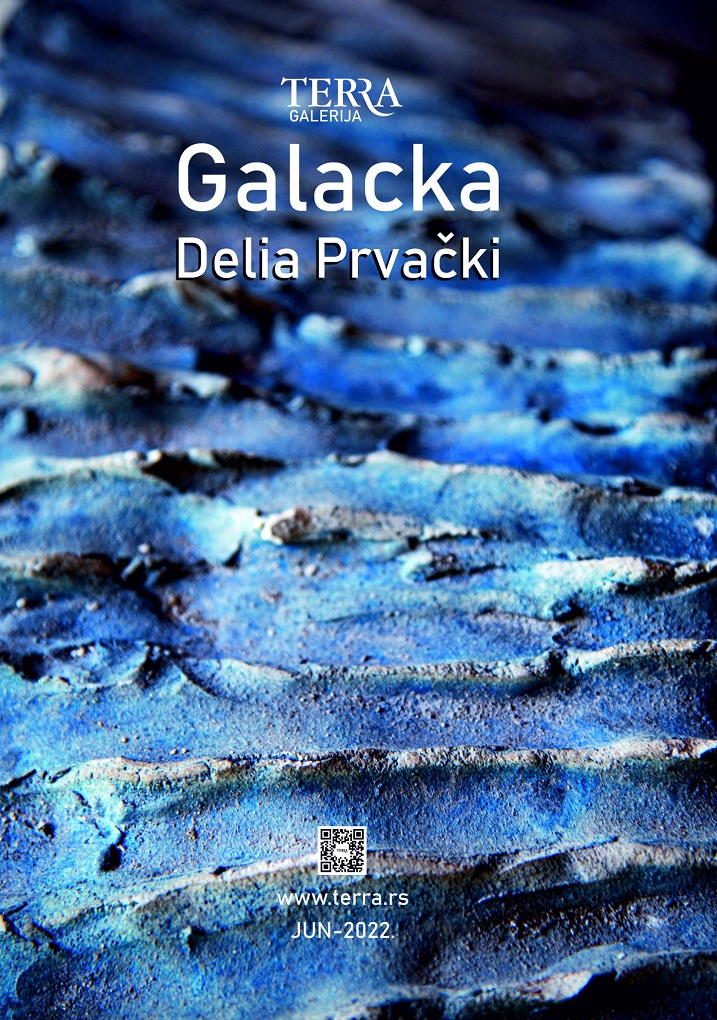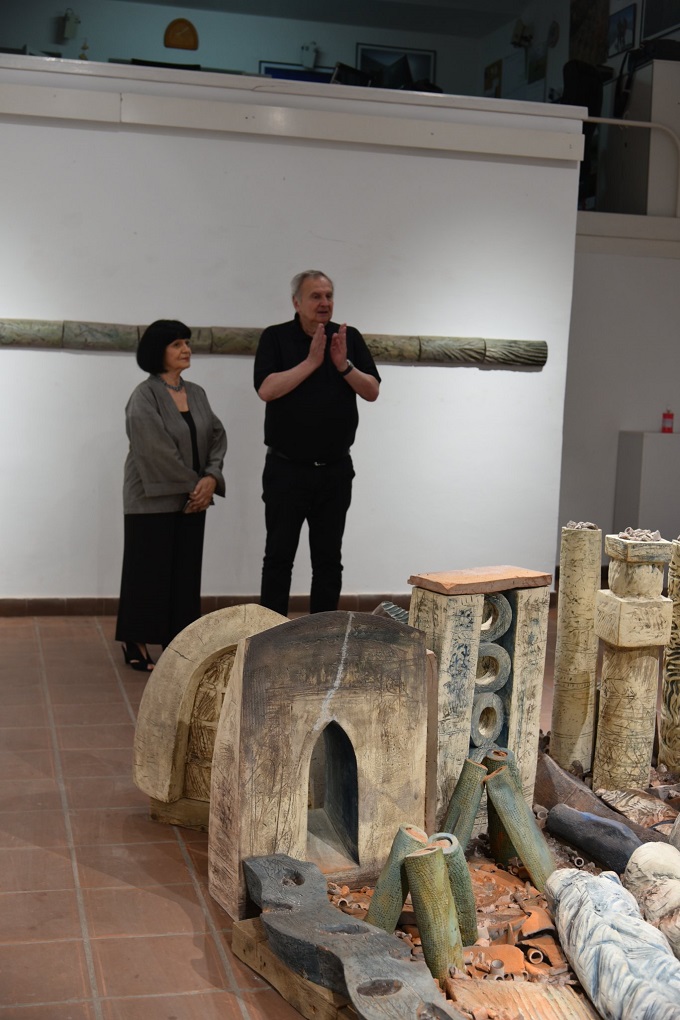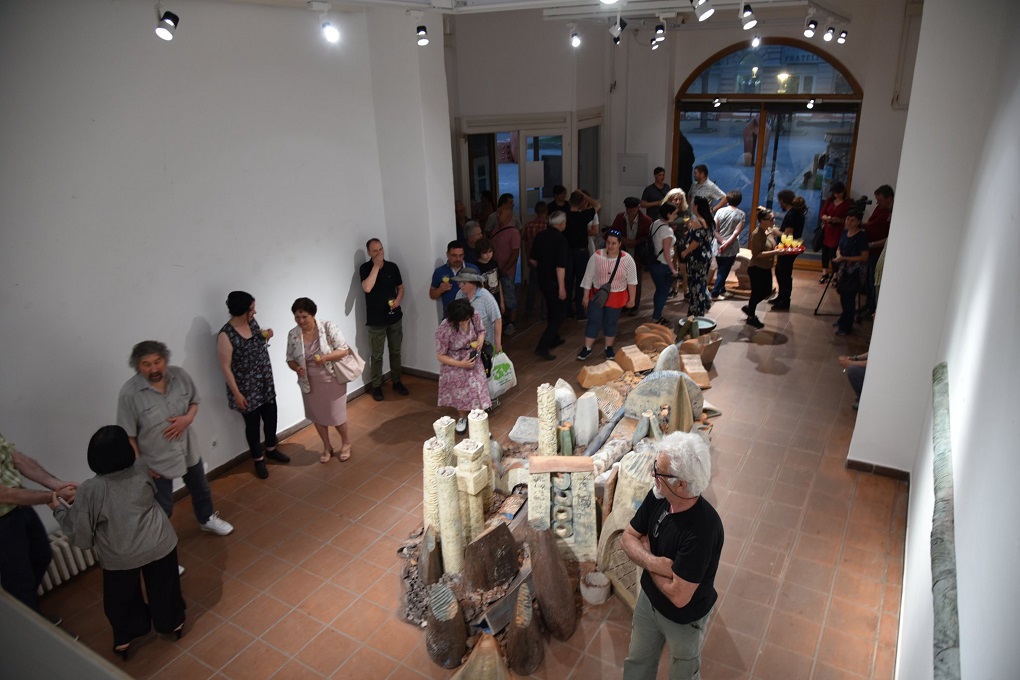
-
03/06/2022
Delia Prvački – Galacka
The exhibition “Galacka” by the artist Delija Prvački was opened in the Terra Gallery on June 3.
Delia Prvacki (1950, Baia Mare, Romania) began her creative adventure in the 1970s, shortly after graduating in ceramics from the University of the Arts in Bucharest (1970-75). That is when her early works were discretely based on the tradition of Romanian applied ceramics. From 1978 to 1989, Delia lived in Pancevo with her husband, painter Milenko Prvacki, and their daughter Ana, who is now an internationally recognized artist, was born there. During 1989, the Prvački family moved to Singapore.
In the Yugoslav period of his art, Delia minimized the ordinary utilitarianism of his ceramic works and insisted on the intellectual applicability of formal plastic, aesthetic and ethical principles. During the eighties of the last century, she was among those Yugoslav artists who inaugurated the ceramic-plastic concept which harmonized the performance methods of applied ceramics with the constitution and autonomous action of the sculptural form. Delia was already inspired by nature and its concrete appearance (fruits, seeds, grass) in the early 80’s, just like during the entire opus, but also by its fluid manifestations (time, flow, water, dialectical process). For the realization of her artistic contents, the artist found an adequate plastic answer. In an interview, Delia explains: “I placed the first chains of enlarged necklaces on the gallery floor. Forming a massive continuous line, I described the impression of easy flow, regardless of the fact that the material used is made of concrete, hard and solid components.” To make these works, Delia used raw clay enriched with grog (fine gravel of ground and baked clay). She skillfully and discreetly glazed or patinated (oxide) certain shapes, but she always insisted on emphasizing the naturalness of the material.
The setting of this Kikinda exhibition is dominated by an in-situ installation with the appearance and emphasized principle of river flow; a conglomeration in which numerous individual final and redesigned works, organic forms, pillars and other architectural compositional fragments, abstract forms, broken material, even waste from her, three and a half decades ago closed Pancevo studio, were collected. In that artistic installation, in addition to material fragments, Delia’s personal experiences, fascination with life and the world, her emotionality, autobiographical impressions and prints, and her overall life and artistic philosophy are also threatened. At the same time, with this semantically complex conglomerate, the artist enables her spectator to reconsider her own destiny in a world that has been constantly, rapidly and drastically changing over the past four and a half decades. In such circumstances, even in this exhibition structure, she insists on the logic of development, on continuity and a comprehensive dialectical process – and the horizontals of stringed forms testify to this. By re-presenting, renewing and re-examining the effectiveness of the works preserved in the old studio, Delia Prvački builds a sublime presentation of her own artistic engagement with a kind of archeology of visual memory. Its current artistic structure, deposited with numerous signs and metaphorical meanings created in the decades-long past, shows that it is essentially effective even today. In the current age of raging capitalism, new technologies and global medialization; in the environment of constant crisis of the world, man is more and more endangered, more insecure, dissatisfied and unhappy. Delia Prvački from the position of a definitely mature and realized artist with her art still cares about the destiny consistency and integrity of the world in which she lives.
The symbol of the flow through space and time are the rivers, and in the art of Delia the First it is certainly the Danube – the great European river that divided (and connected) its Romania with Yugoslavia; The Danube and the Danube region, which Conrad calls a beautiful and diverse garden, and Magris defines it as the life scene of top intellectuals who give meaning to their and our existence. Therefore, the name of the Danube, originally, was supposed to be the title of an art installation in the Terra Gallery. However, respecting the genius loci of Kikinda, the artist decided on the title Galacka, the name of a river that no longer exists because it was eventually reclaimed and turned into a drainage canal. Galacka originates in Romania and its name is pronounced equally in Romanian and Serbian. In essence, with the title of her installation, Delia Prvački, here in Kikinda, made a kind of homage to Galacki, a river that represents a kind of connection of her homeland with the country in which she once lived and in which she was artistically formed. – Sava Stepanov
The exhibition is open until July 3.


